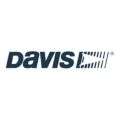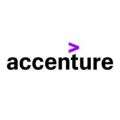
Overview
The meteorology industry focuses on studying and predicting atmospheric phenomena. Meteorologists analyze weather patterns, climate trends, and natural disasters to provide accurate forecasts and warnings. They use advanced technology such as satellites, radar systems, and weather balloons to collect data. This information is crucial for various sectors including agriculture, transportation, and disaster management. Meteorologists play a vital role in understanding and mitigating the impacts of weather on society and the environment.
Depending on specific features and functions, GAO Tek’s gas analyzer are sometimes referred to as gas inspects, analytic gases, spectra senses, gas quests, purity scans, molecule masters, vapor checks, element senses, gas IQs and react Scans.
Furthermore, GAO Tek’s gas analyzers are further grouped into:
benchtop, chlorine, flue, leak detection, handheld, rugged, volatile organic compound (voc), waterproof, wired, and wireless.
GAO Tek’s gas analyzers have the following applications in the meteorology industry:
- Air Quality Monitoring: GAO Tek’s Gas analyzers help monitor pollutants such as carbon monoxide (CO), sulfur dioxide (SO2), nitrogen oxides (NOx), and ozone (O3) to assess air quality and ensure compliance with regulatory standards.
- Weather Balloon Measurements: GAO’s Gas analyzers are used in weather balloons to measure atmospheric gases at different altitudes, providing valuable data for weather forecasting and research.
- Greenhouse Gas Monitoring: GAO Tek’s Gas analyzers measure greenhouse gases such as carbon dioxide (CO2), methane (CH4), and nitrous oxide (N2O) to study climate change and its impact on the environment.
- Volcanic Gas Monitoring: GAO’s Gas analyzers are used to monitor gases emitted by volcanoes, such as sulfur dioxide (SO2) and carbon dioxide (CO2), to predict volcanic activity and protect nearby communities.
- Emission Monitoring: GAO’s Gas analyzers are used to monitor emissions from industrial sources, vehicles, and other sources to assess their impact on the environment and public health.
- Atmospheric Research: GAO Tek’s Gas analyzers are used in research to study atmospheric composition, chemical reactions, and the transport of gases in the atmosphere.
- Weather Station Measurements: GAO’s Gas analyzers are used in weather stations to measure atmospheric gases and provide data for weather forecasting and research.
More information on gas analyzers and their applications in other industries can be found on
This category page lists related products
Systems in the Meteorology Industry Utilizing Gas Analyzers
Here are some popular systems in the meteorology industry using gas analyzers:
Air Quality Monitoring System:
- This system integrates gas analyzers to continuously monitor air pollutants such as ozone, carbon monoxide, and nitrogen dioxide. Advanced software processes data in real-time, enabling meteorologists to assess air quality trends and issue air quality forecasts to the public. The system aids in understanding the relationship between air pollution levels and meteorological conditions, contributing to better urban planning and health protection measures.
Greenhouse Gas Monitoring Network:
- Utilizing gas analyzers, this network monitors greenhouse gas emissions such as carbon dioxide, methane, and nitrous oxide across various locations. The data collected is analyzed using specialized software to track emission sources, assess regional carbon footprints, and evaluate the effectiveness of climate change mitigation strategies. This system plays a crucial role in understanding the dynamics of greenhouse gas concentrations in the atmosphere and their impact on global climate patterns.
Weather Balloon Measurement System:
- Gas analyzers are integrated into weather balloon payloads to measure atmospheric parameters such as temperature, humidity, and pressure at different altitudes. The collected data is transmitted back to ground stations and processed using dedicated software to create vertical profiles of the atmosphere. These profiles provide valuable insights into atmospheric stability, moisture content, and temperature inversions, enhancing weather forecasting accuracy and severe weather prediction capabilities.
Airborne Remote Sensing Platform:
- Gas analyzers are installed on aircraft or drones equipped with remote sensing instruments to conduct aerial surveys of atmospheric composition. The collected data, along with imagery from onboard cameras or sensors, is processed using specialized software to map spatial variations in air quality, greenhouse gas concentrations, and atmospheric dynamics. This system enables meteorologists to study localized pollution hotspots, track pollutant dispersion patterns, and assess the impact of industrial activities on air quality and climate.
Automated Weather Station Network:
- Gas analyzers are deployed in automated weather stations scattered across different geographical locations to measure atmospheric parameters continuously. These stations, equipped with sensors for temperature, humidity, wind speed, and direction, integrate gas analyzers to monitor air quality in real-time. The collected data is transmitted to central servers and analyzed using software to generate weather forecasts, detect air pollution episodes, and support environmental monitoring and decision-making processes.
Volcanic Gas Monitoring System:
- Gas analyzers are utilized in volcanic monitoring stations to measure the composition and concentration of gases emitted by active volcanoes. Specialized software processes the data to monitor changes in gas emissions, detect volcanic unrest, and forecast potential volcanic eruptions. This system plays a crucial role in volcano surveillance and hazard assessment, helping to protect nearby communities and aviation interests from volcanic gas hazards.
Atmospheric Research Laboratory:
- Gas analyzers are integrated into atmospheric research laboratories to conduct controlled experiments and studies on atmospheric chemistry and physics. The laboratory setup includes specialized equipment and instruments for simulating atmospheric conditions and analyzing gas samples. Data collected from these experiments are processed using advanced software to investigate atmospheric processes, validate theoretical models, and enhance our understanding of complex interactions between gases, aerosols, and radiation in the atmosphere.
Maritime Weather Monitoring System:
- Gas analyzers are installed on buoys, ships, and offshore platforms to monitor maritime weather conditions and sea-air exchange processes. These instruments measure parameters such as sea surface temperature, salinity, and atmospheric gases, including carbon dioxide and methane. Data collected from these marine monitoring systems are transmitted to meteorological agencies and analyzed using software to improve marine weather forecasts, monitor climate change impacts on oceanic ecosystems, and support maritime navigation and safety.
Atmospheric Dispersion Modeling System:
- Gas analyzers are coupled with atmospheric dispersion models to simulate the transport and dispersion of pollutants in the atmosphere. These models take into account meteorological data, emission sources, and atmospheric chemistry to predict pollutant concentrations and dispersion patterns over time and space. The modeling results are visualized and analyzed using software to assess air quality impacts, evaluate pollution control measures, and support emergency response planning for hazardous air pollution events.
Climate Monitoring and Analysis System:
- Gas analyzers are utilized in climate monitoring networks to collect long-term data on atmospheric composition and greenhouse gas concentrations. This data, along with meteorological observations, is analyzed using climate analysis software to assess climate trends, variability, and changes over time. These systems provide valuable information for climate research, climate change adaptation planning, and policy development aimed at mitigating the impacts of global warming and climate variability.
GAO Tek’s targeted markets are North America, particularly the U.S. and Canada.
Complying with Government Regulations
GAO Tek’s gas analyzers comply or help our customers comply with the U.S. government regulations such as:
- Clean Air Act (CAA) regulations
- National Ambient Air Quality Standards (NAAQS)
- EPA regulations
- National Weather Service regulations
- Federal Aviation Administration (FAA)
- Occupational Safety and Health Administration (OSHA) regulations
- National Oceanic and Atmospheric Administration (NOAA) regulations
- Environmental Protection Agency (EPA) regulations
- Federal Energy Regulatory Commission (FERC) regulations
- Department of Defense (DoD) regulations
GAO Tek’s gas analyzers comply or help our clients comply with the Canadian regulations such as:
- Canadian Environmental Protection Act, 1999 (CEPA)
- Canadian Ambient Air Quality Standards (CAAQS)
- National Air Pollution Surveillance Program (NAPS)
- Canadian Environmental Assessment Act (CEAA)
- Greenhouse Gas Pollution Pricing Act (GGPPA)
- Canadian Aviation Regulations (CARs)
- Meteorological Service of Canada (MSC) regulations
- Canadian Council of Ministers of the Environment (CCME) guidelines
- Canadian Environmental Quality Guidelines (CEQG)
- Occupational Health and Safety Regulations (OHS)
Case Studies of Gas Analyzers in the Meteorology Industry
Anemometers are sometimes called gas inspects, analytic gases, spectra senses, gas quests, purity scans, molecule masters, vapor checks, element senses, gas IQs and react Scans.
Here are some practical examples of using gas analyzer in the meteorology industry:
Northeast Region of the U.S. in New York City, gas analyzers were deployed to monitor air quality during heatwaves, revealing elevated levels of ozone and particulate matter.
In Boston, Massachusetts, researchers utilized gas analyzers to assess greenhouse gas emissions from urban transportation, contributing to local emission reduction strategies. Gas analyzers in Hartford, Connecticut, aided in investigating the impact of industrial pollution on regional air quality, leading to stricter emission regulations.
Midwest Region of the U.S. gas analyzers were employed in Chicago, Illinois, to study the formation and dispersion of air pollutants during winter inversions, aiding in pollution control measures.
In Detroit, Michigan, gas analyzers measured volatile organic compounds (VOCs) from industrial sources, informing regulatory actions to curb ozone formation. In Minneapolis, Minnesota, gas analyzers monitored methane emissions from agricultural activities, guiding the adoption of sustainable farming practices to mitigate greenhouse gas levels.
South Region of the U.S. in Houston, Texas, gas analyzers played a crucial role in monitoring air quality near petrochemical plants and refineries, identifying pollution hotspots and informing public health interventions.
In Atlanta, Georgia, gas analyzers were employed to analyze vehicular emissions’ impact on urban air quality, prompting initiatives to reduce traffic congestion and promote alternative transportation methods.
In Miami, Florida, gas analyzers were utilized to study aerosol atmospheric chemistry and its influence on precipitation patterns, enhancing regional weather understanding.
West Region of the U.S. in Los Angeles, California, gas analyzers were utilized to measure nitrogen oxides (NOx) emissions from vehicular traffic, providing insights crucial for smog management strategies.
In Seattle, Washington, gas analyzers played a pivotal role in monitoring carbon monoxide levels during wildfires, enabling timely air quality advisories and public health protections. In Denver, Colorado, gas analyzers were instrumental in investigating altitude’s impact on atmospheric composition, contributing to an enhanced understanding of mountain meteorology.
Canada in the vibrant metropolis of Toronto, Ontario, a comprehensive study employed gas analyzers to monitor urban air quality, providing critical insights into the efficacy of emission reduction initiatives.
In Montreal, Quebec, gas analyzers were utilized to study the atmospheric chemistry of volatile organic compounds (VOCs), informing regional air quality management strategies. Meanwhile, on the West Coast in Vancouver, British Columbia, gas analyzers were pivotal in measuring methane emissions from natural gas infrastructure, guiding policies aimed at reducing greenhouse gas levels.
GAO RFID Inc. RFID Hardware, a sister company of GAO Tek Inc., is ranked as a top 10 RFID suppliers in the world. Its RFID, BLE, and IoT products have also been widely used in the meteorology industry. Articles about related industries are given below:
Use of Gas Analyzers with Leading Software and Cloud Services in the Meteorology Industry
GAO Tek has used or has facilitated its customers to use GAO’s gas analyzers with some of the leading software and cloud services in their applications. Examples of such leading software and cloud services include:
- WeatherLink
- MeteoStar
- Vaisala Insight PC Software
- AirVisual Pro
- Davis WeatherLink
- AQManager
- AirVision Pro
- METView
- Weather API from Weatherbit
- AccuWeather API
- Google Cloud Platform
- Microsoft Azure
- Amazon Web Services (AWS)
GAO Tek’s gas analyzers and their applications in other industries are listed on
Other related products can be found on this category page
Meeting Customers’ Demands
Large Choice of Products
In order to satisfy the diversified needs of their corporate customers, GAO Tek Inc. and its sister company GAO RFID Inc. together offer a wide choice of testing and measurement devices, network products, RFID, BLE, IoT, and drones.
Fast Delivery
To shorten the delivery to our customers, GAO has maintained a large stock of its products and is able to ship overnight within the continental U.S. and Canada from the nearest warehouse.
Local to Our Customers
We are located in both the U.S. and Canada. We travel to customers’ premises if necessary. Hence, we provide a very strong local support to our customers in North America, particularly the U.S. and Canada.
Furthermore, we have built partnerships with some integrators, consulting firms and other service providers in different cities to further strengthen our services. Here are some of the service providers in the meteorology industry we have worked with to serve our joint customers:
- IBM
- Deloitte
- Accenture
- CGI
- Booz Allen Hamilton
- Capgemini
- Infosys
- Cognizant
- Leidos
- Raytheon Technologies
- Northrop Grumman
- Wipro
- L3Harris Technologies
- BAE Systems
- Lockheed Martin
GAO has Many Customers in the Meteorology Industry
The products from both GAO Tek Inc. and GAO RFID Inc. have been widely used in the meteorology industry by many customers, including some leading companies. Here is more information on applications of GAO RFID Inc.’s products in the meteorology industry. Articles about related industries are given below:
Information electronic telecommunications industries RFID solution
Research technology professional service industries RFID solutions
Here are some of GAO’s customers in the meteorology industry:
- The Weather Company (IBM)
- Vaisala
- AccuWeather
- Weathernews Inc.
- Earth Networks
- Campbell Scientific
- Davis Instruments
- Deloitte
- Accenture
- CGI
- Booz Allen Hamilton
- Capgemini
- Infosys
- Cognizant
- Leidos
- Raytheon Technologies
- Northrop Grumman
- Wipro


















Contact Us
Here are GAO Tek’s gas analyzers and they are further organized by feature:
benchtop, chlorine, flue, leak detection, handheld, rugged, volatile organic compound (voc), waterproof, wired, and wireless.
If you have any questions about our products or want to place an order, our technical experts can help you.
Please fill out this form or email us.
